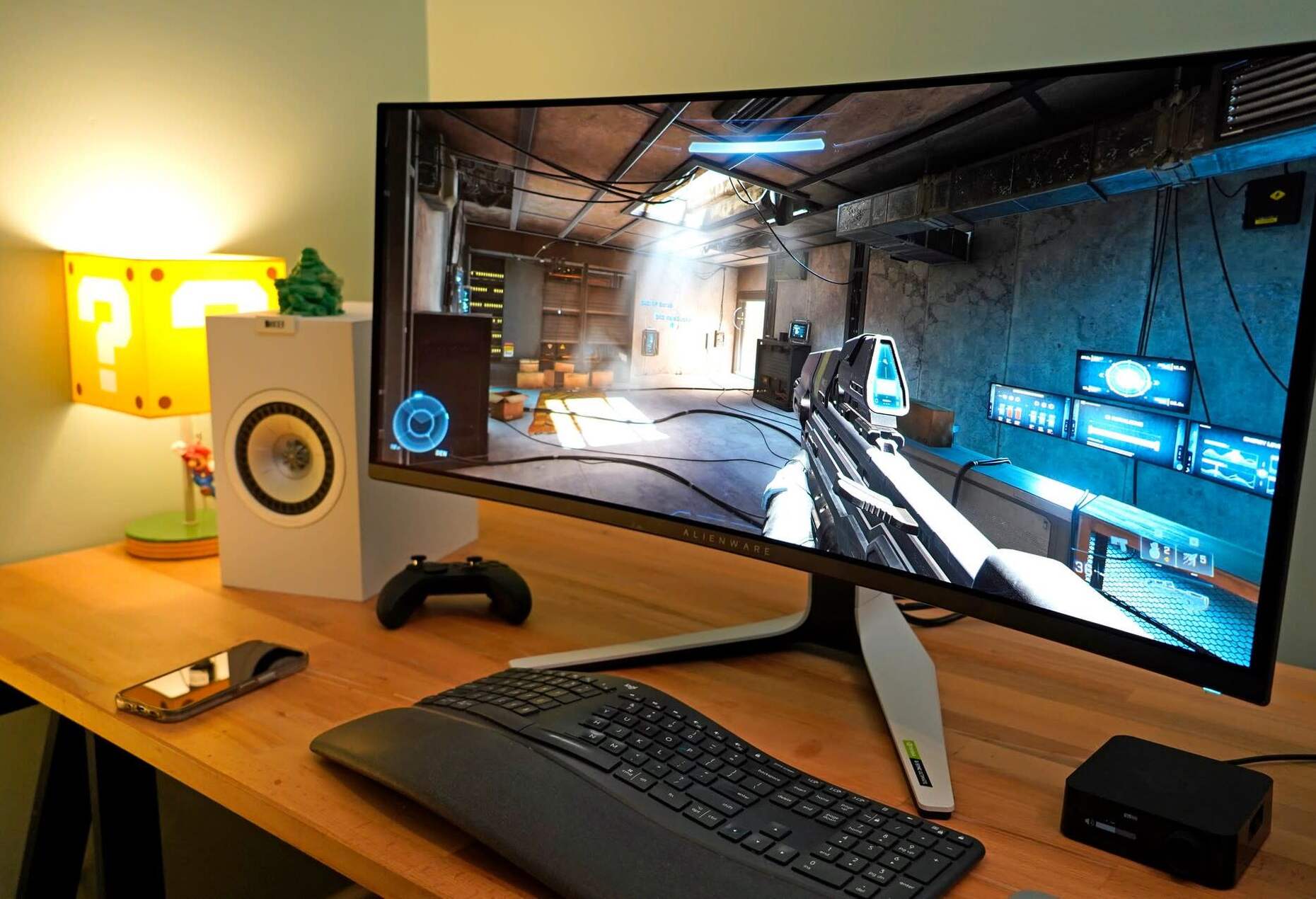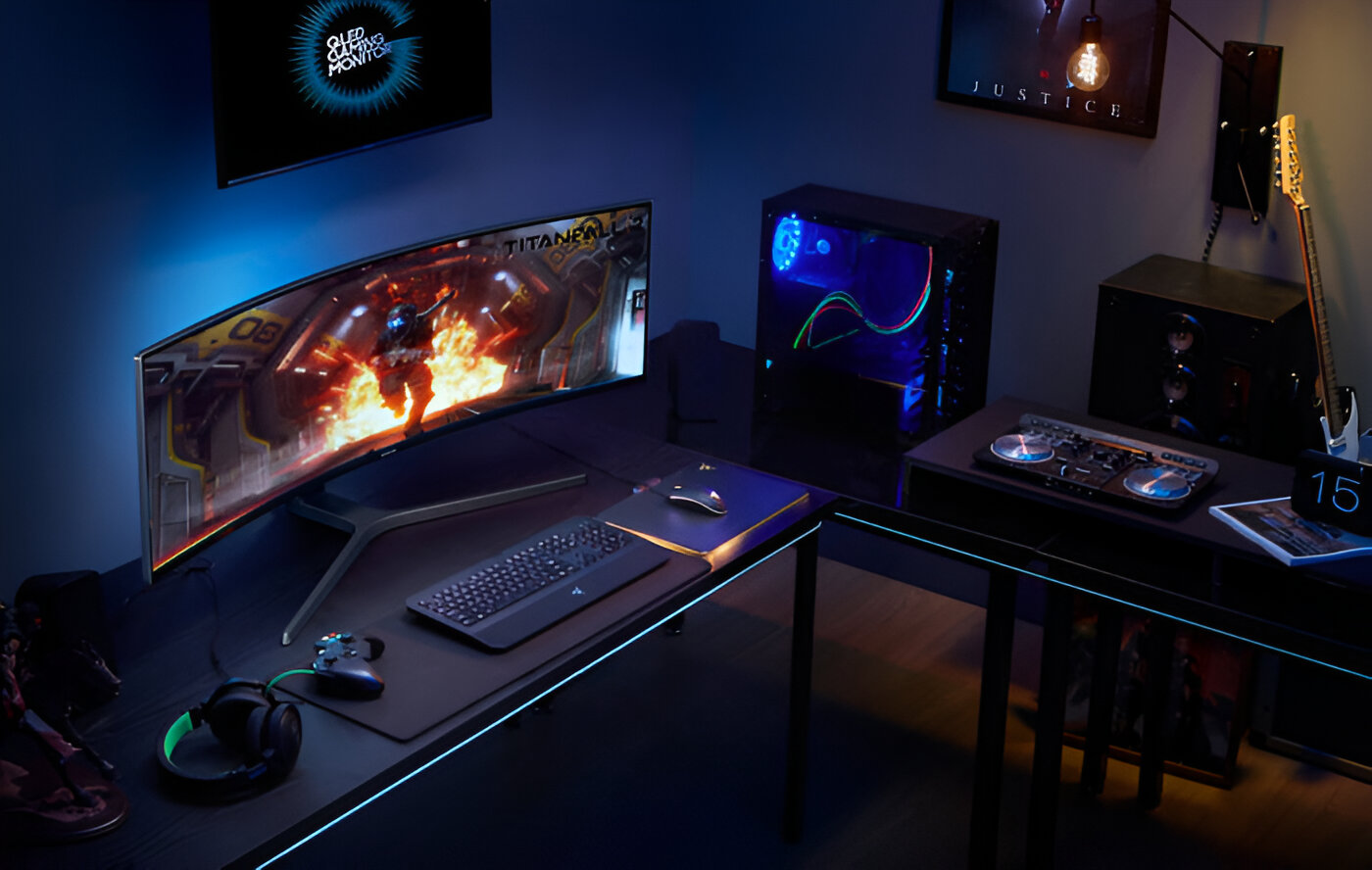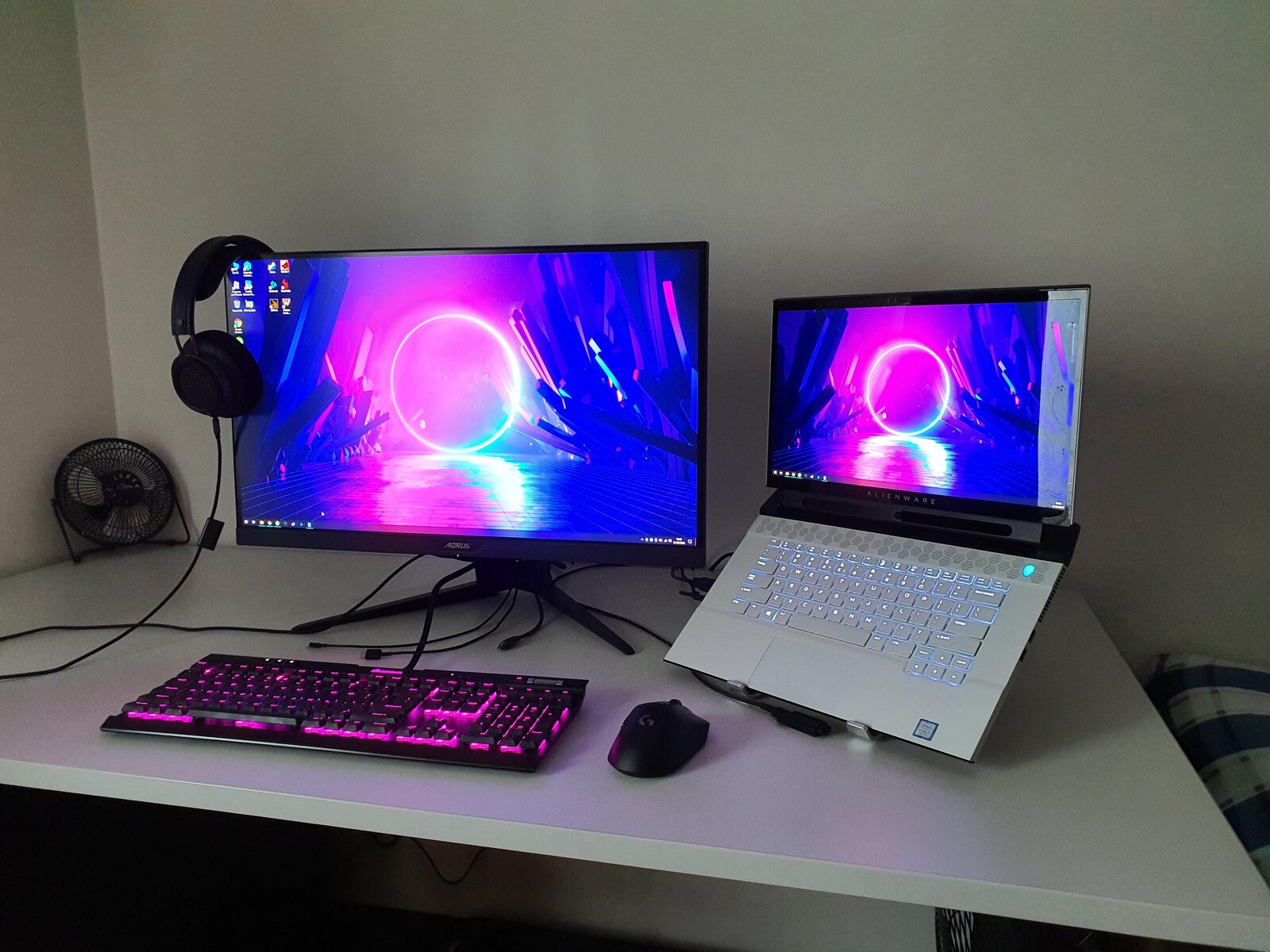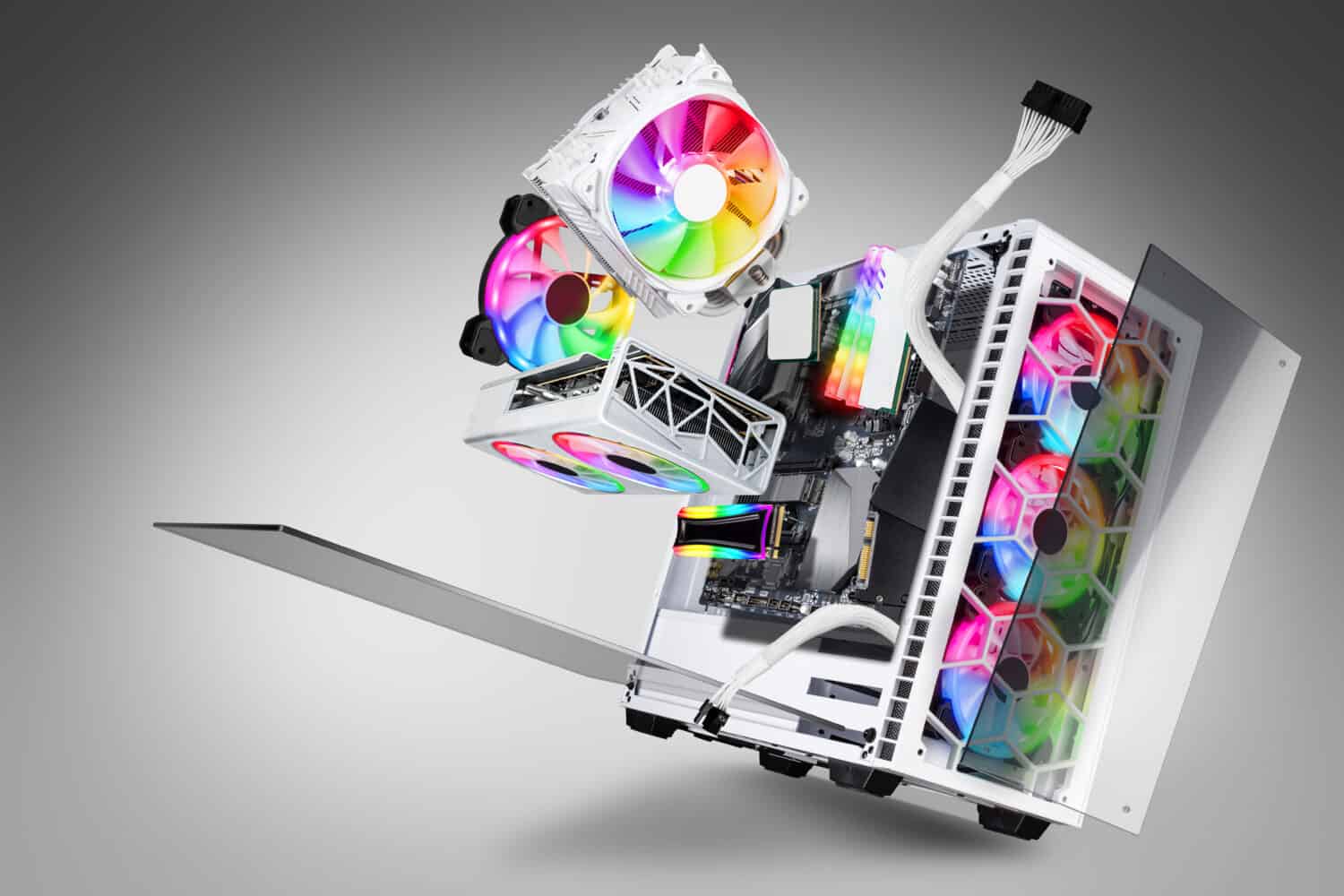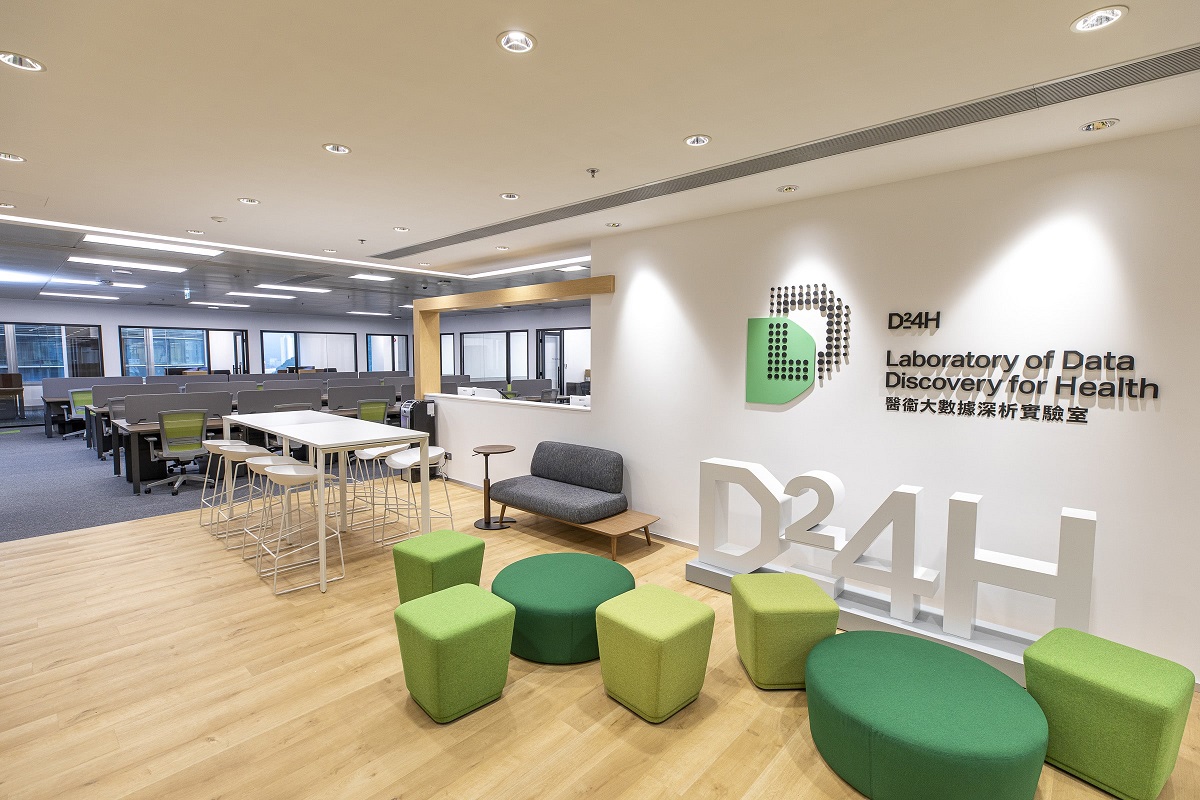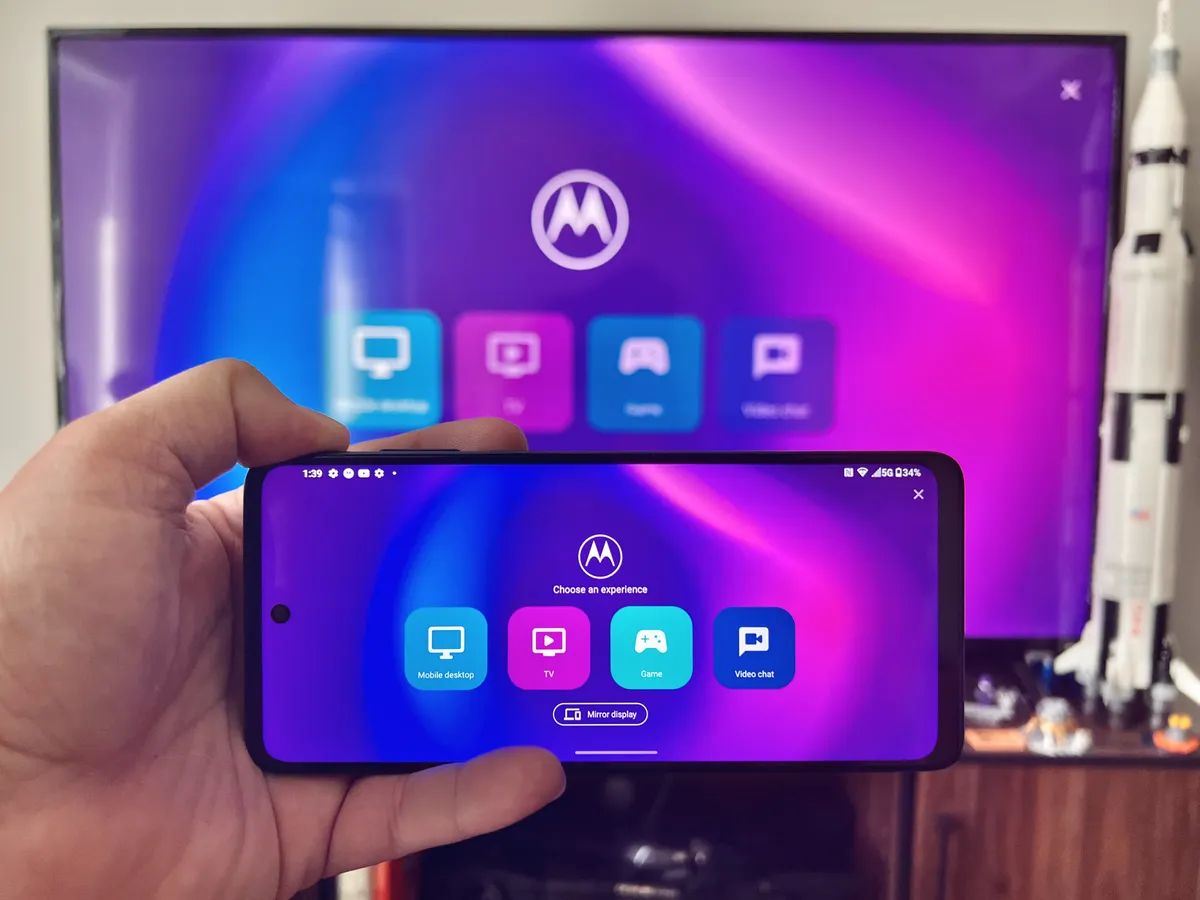Introduction
Choosing the right gaming monitor size is crucial for an immersive and enjoyable gaming experience. The size of a gaming monitor can greatly impact your gameplay, as it affects how you perceive the game world, the level of detail you can see, and your overall comfort during long gaming sessions. With so many options available on the market, it can be overwhelming to determine the ideal size for your gaming setup.
Factors such as the size of your gaming space, your budget, the type of games you play, and your personal preferences all come into play when deciding the optimal monitor size. It’s essential to strike a balance between having a screen that is large enough to provide an immersive gaming experience and one that doesn’t overpower your gaming space or strain your eyes.
In this article, we will explore the crucial factors to consider when choosing a gaming monitor size. We will delve into the impact of screen resolution, optimal viewing distance, budget considerations, the influence of game genre, maximizing productivity, and the potential benefits of dual-monitor setups. By the end, you’ll have a clearer understanding of what size gaming monitor is best suited for your gaming needs.
Factors to consider when choosing a gaming monitor size
When selecting a gaming monitor size, several factors should be taken into account to ensure an optimal viewing experience. Here are the key considerations:
- Gaming space: The available space where you plan to set up your gaming monitor is an essential consideration. If you have a compact gaming area, a larger monitor might overwhelm the space and make it uncomfortable to play. Conversely, if you have a spacious gaming room, a smaller monitor may not provide the immersive experience you desire.
- Screen resolution: The resolution of your gaming monitor is equally important as its size. Higher resolutions, such as 1440p or 4K, offer sharper and more detailed visuals. If you opt for a larger monitor size, a higher resolution can help maintain image quality at larger screen sizes.
- Optimal viewing distance: The ideal viewing distance for your gaming monitor depends on its size. Sitting too close to a large monitor can result in a distorted or pixelated image, while sitting too far from a small monitor can make it difficult to fully immerse yourself in the game. As a general rule, the optimal distance is about 2-3 feet away from the screen.
- Refresh rate: The refresh rate of a gaming monitor determines how quickly it can display new images. Higher refresh rates, such as 144Hz or 240Hz, provide smoother gameplay and reduce motion blur. For larger monitors, it is recommended to select a monitor with a higher refresh rate to ensure a fluid gaming experience.
- Panel type: Different panel types, such as TN, IPS, or VA, offer varying levels of color accuracy, contrast, and viewing angles. Consider the panel type that aligns with your gaming preferences. Keep in mind that larger monitors may have wider viewing angles, making IPS or VA panels more suitable.
- Budget: Your budget will play a significant role in determining the size of your gaming monitor. While larger monitors tend to offer a more immersive experience, they can also come with higher price tags. It’s essential to strike a balance between your desired size and budget to ensure you’re getting the best value for your money.
By considering these factors, you can determine the optimal size for your gaming monitor that provides an immersive gaming experience without compromising comfort or breaking the bank.
The importance of screen resolution
When choosing a gaming monitor, screen resolution is a crucial factor to consider. It determines the level of detail and clarity that you’ll experience in your games. Higher resolutions offer sharper and more detailed visuals, enhancing your overall gaming experience. Here’s why screen resolution is important:
Image quality: A higher screen resolution, such as 1440p or 4K, allows for more pixels on the screen, resulting in sharper and crisper visuals. This means you can see finer details in textures, characters, and environments, creating a more immersive gaming experience. The improved image quality enhances the realism of games, making them more visually appealing.
Text legibility: Screen resolution also impacts the legibility of in-game text, user interfaces, and menus. With a higher resolution, text appears sharper and more readable, allowing you to easily navigate through menus and read important information without straining your eyes. This is particularly important in text-heavy games, RPGs, and strategy games where clear text is essential for gameplay.
Field of view: A higher screen resolution enables you to see more of the game world. With a larger number of pixels, you can see a wider field of view, giving you a broader perspective and enhancing your situational awareness in games. This can be particularly advantageous in competitive multiplayer games, where being aware of your surroundings can mean the difference between victory and defeat.
Future-proofing: Investing in a gaming monitor with a higher resolution can also future-proof your setup. As games continue to evolve and become more graphically demanding, having a higher resolution monitor ensures that you can fully enjoy upcoming titles without needing to upgrade your monitor. It allows you to take advantage of the latest graphics advancements and push the boundaries of visual fidelity in gaming.
It’s worth noting that higher screen resolutions do require more powerful hardware to drive them effectively. Ensure that your gaming rig can handle the demands of the desired resolution before making a purchase. Additionally, keep in mind that a higher resolution may result in lower frame rates, especially in graphically intensive games. Consider your preferences for image quality versus smooth gameplay when choosing the ideal screen resolution.
By selecting a gaming monitor with an appropriate resolution, you can enhance the visual quality, text legibility, field of view, and future-proofing of your gaming experience, ultimately immersing yourself in the captivating worlds of your favorite games.
Optimal viewing distance for gaming monitors
Choosing the right viewing distance for your gaming monitor is crucial for a comfortable and immersive gaming experience. Sitting too close or too far from the screen can negatively impact your gameplay and strain your eyes. Here’s what you need to know about the optimal viewing distance:
Distance and screen size: The ideal viewing distance for your gaming monitor depends on its size. As a general rule, the distance should be about 2-3 feet away from the screen. If you sit too close to a larger monitor, you may find the visuals overwhelming or pixelated. Conversely, sitting too far from a smaller monitor can result in difficulties in fully immersing yourself in the game.
Field of view: The optimal viewing distance plays a significant role in maximizing your field of view. Sitting at the right distance allows your eyes to take in more of the screen, giving you a wider perspective of the game world. This is particularly important in games where a broader field of view enhances situational awareness, such as first-person shooters or racing games.
Eye comfort: Maintaining an appropriate viewing distance is essential for minimizing eye strain and fatigue during long gaming sessions. Sitting too close to the screen can lead to eye strain, dryness, and even headaches. Conversely, sitting too far can cause you to strain your eyes to focus on smaller details. By finding the optimal viewing distance, you can ensure that your eyes are comfortable and reduce the risk of eye-related discomforts.
Screen size and resolution: The size of your gaming monitor, in combination with its resolution, can also impact the ideal viewing distance. For instance, a larger screen with a higher resolution may allow you to sit a bit farther away while still enjoying a clear and detailed image. It is recommended to consider the pixel density (pixels per inch) of the monitor when determining the optimal viewing distance.
Adjustability: Some gaming monitors offer adjustable stands or wall-mounted options that allow you to position the screen at an optimal height and angle. This can further enhance your viewing experience and help find the ideal distance from your eyes to the screen. Consider the adjustability options available to maximize your comfort and ensure a proper viewing distance.
By finding the right balance between distance, screen size, and comfort, you can optimize your gaming experience. Experiment with different distances and adjust as needed until you find your sweet spot. Remember, the goal is to have a comfortable, immersive, and enjoyable gaming experience while minimizing the strain on your eyes.
The impact of screen size on gaming experience
The size of your gaming monitor plays a significant role in shaping your overall gaming experience. From immersion to visibility, screen size can greatly impact how you perceive and interact with your games. Here are some key ways in which screen size influences your gaming experience:
Immersive gameplay: Larger screen sizes can provide a more immersive gaming experience by filling your field of vision with captivating visuals. A bigger screen can make you feel more connected to the game world, allowing you to appreciate the details and ambiance in a more profound way. This is particularly advantageous in open-world games or visually stunning titles that require a larger canvas to fully appreciate the graphics and artistry.
Enhanced visibility: A larger gaming monitor offers increased visibility, allowing you to see more of the game world at once. This can be particularly beneficial in games that require quick reactions or require monitoring multiple elements simultaneously, such as strategy or competitive multiplayer games. With a larger screen, you’re less likely to miss important information or details, giving you a competitive edge and a more enjoyable gaming experience.
Detail and clarity: When playing games with intricate visuals or detailed environments, a larger screen size can allow you to appreciate the finer details that may be missed on a smaller screen. Textures, character animations, and environmental effects are more pronounced, enhancing the realism and immersion of the game. This is particularly important in story-driven games, RPGs, or games with rich world-building.
Comfort and eye strain: While larger screens may offer greater immersion, it’s important to consider comfort and eye strain. Sitting too close to a large screen can strain your eyes and may require more eye movement to take in all the information. Finding the appropriate viewing distance and considering the size of your gaming space is essential to ensure both enjoyment and comfort during long gaming sessions.
Compatibility with game genres: The screen size that is optimal for your gaming experience may also depend on the genres of games you enjoy. For instance, if you primarily play first-person shooters or action games, a larger screen can provide a more immersive and cinematic experience. On the other hand, if you often play competitive multiplayer games, a smaller screen may allow for quicker visual scanning and improved reaction times.
Ultimately, the impact of screen size on your gaming experience is a personal preference. It’s important to consider factors such as immersion, visibility, detail, comfort, and compatibility with the games you play when determining the ideal screen size for your gaming setup. By striking the right balance, you can enjoy a captivating and immersive gaming experience tailored to your preferences.
Balancing budget and monitor size
When choosing a gaming monitor, one of the key considerations is finding the right balance between budget and monitor size. While a larger monitor may offer a more immersive experience, it often comes with a higher price tag. Here are some factors to consider when balancing your budget with the desired monitor size:
Your gaming needs: Consider the types of games you play and how much screen real estate you require. If you primarily play fast-paced competitive games that benefit from a quick visual scan, a smaller and more affordable monitor may be sufficient. However, if you enjoy visually stunning open-world games or detailed RPGs, you may prioritize a larger screen size to fully appreciate the graphics and immerse yourself in the game world.
Budget constraints: Determine your budget and allocate a portion for your gaming monitor. Assess how much you are willing to spend and consider the trade-off between monitor size and other features, such as screen resolution, refresh rate, or panel type. Remember that a larger monitor may come with additional costs, such as a more powerful graphics card to handle the higher resolution or refresh rate.
Value for money: Look for monitors that offer a good balance between price and performance. Consider the reputation of the manufacturer, customer reviews, and features offered at various price points. Carefully assess the specifications of different models to find the one that provides the best value for your budget and gaming requirements.
Consider refurbished or older models: If you’re on a tight budget, consider refurbished or older monitor models that still offer decent performance. These options can provide cost savings without sacrificing too much in terms of size or functionality. Just ensure that the refurbished product comes with a warranty and is from a reputable seller.
Future-proofing: It’s essential to consider the longevity of your investment. While it may be tempting to opt for a larger monitor within your budget, evaluate whether it will suit your needs in the long run. Consider factors such as advancements in technology, future game requirements, and potential upgrades to your gaming setup. Balancing your budget with a monitor size that offers longevity and future-proofing can be a prudent choice.
Remember that gaming monitors come in a range of sizes, and there are options available to suit different budgets. While it may be tempting to go for the largest monitor within your budget, consider your specific gaming needs and ensure that the size of the monitor aligns with your gaming preferences without stretching your budget too thin. By striking the right balance, you can enjoy an immersive gaming experience without breaking the bank.
The influence of game genre on monitor size preference
The type of games you enjoy and frequently play can have a significant influence on your preference for monitor size. Different game genres benefit from specific monitor sizes to optimize gameplay and enhance the overall gaming experience. Here’s a closer look at how game genre influences monitor size preference:
First-person shooters (FPS) and action games: Fast-paced games like FPS and action games often require quick reflexes and visual acuity. A larger monitor can provide a wider field of view, allowing you to spot enemies or objects more easily. With a larger screen, you can have a more immersive experience, making it easier to focus on the action unfolding in front of you. Many professional gamers and competitive players prefer larger monitors for maximum visibility and precision aiming.
Role-playing games (RPGs) and open-world games: RPGs and open-world games often feature expansive environments and intricate details. In these types of games, a larger monitor allows you to fully appreciate the immersive worlds and visually stunning landscapes. With more screen real estate, you can take in the rich details, admire the character designs, and explore intricate environments with greater clarity. For gamers who love to lose themselves in these vast virtual worlds, a larger monitor helps to create a more captivating experience.
Real-time strategy (RTS) and strategy games: Strategy games typically involve managing multiple units or resources on a virtual battlefield. For these games, a larger monitor allows you to have a broader view of your surroundings, giving you a better understanding of the overall situation. This can be particularly advantageous when planning and executing complex strategies or keeping an eye on different areas simultaneously.
Simulation and racing games: Simulation and racing games often benefit from a larger monitor size to enhance the sense of speed and immersion. A larger screen provides an expansive view of the race track or simulation environment, allowing you to see more of the action. This added visibility can help you spot upcoming turns or obstacles, improving your racing performance and overall gameplay experience.
Multiplayer and split-screen gaming: If you frequently engage in multiplayer or split-screen gaming with friends, a larger monitor is desirable to accommodate multiple players. A larger screen can be divided into multiple sections, allowing each player to have their own dedicated space without compromising visibility. This ensures that everyone can fully enjoy the game without feeling cramped or sacrificing the quality of their gaming experience.
Ultimately, the ideal monitor size for gaming depends on your personal preferences and the genres of games you enjoy. Consider the immersive qualities, level of detail, field of view requirements, and multiplayer considerations of your favorite games to determine the monitor size that best complements your gaming experience. Choosing the right monitor size based on game genre allows you to optimize gameplay, enhancing your enjoyment of each gaming session.
Maximizing productivity with a larger gaming monitor
While gaming monitors are primarily associated with gaming experiences, they can also significantly enhance productivity for various tasks. Investing in a larger gaming monitor comes with undeniable benefits for work-related activities outside of gaming. Here’s how a larger gaming monitor can help maximize productivity:
Increased screen real estate: A larger monitor provides more screen space, allowing you to have multiple windows or applications open simultaneously. This is particularly useful for multitasking, such as working on a document while referencing research materials or managing multiple tabs and applications. With a larger screen, you can organize your workflow more efficiently and reduce the time spent switching between different windows.
Enhanced multitasking: With a larger monitor, you can easily split the screen into multiple sections, creating a virtual workspace. This allows you to view multiple documents, spreadsheets, or web pages side by side without the need for multiple monitors. The ability to see more information at once improves productivity and reduces the need for constant switching between different applications or documents.
Better visual clarity: A larger monitor size ensures that content, text, and visuals are displayed larger and with greater clarity. This means less eye strain and improved readability. Whether you’re reading lengthy articles, analyzing data, or editing images or videos, a larger screen allows you to see finer details and work with greater precision. This enhanced visual clarity promotes efficiency and accuracy in your work.
Improved organization and workflow: The additional screen space provided by a larger monitor enables better organization and workflow management. You can arrange your windows, folders, and files in a way that suits your workflow, helping you stay organized and focused. This reduces the time wasted searching for files or information, as everything is easily visible on the screen.
Efficient video editing and content creation: If you’re involved in video editing, graphic design, or content creation, a larger monitor can significantly enhance your productivity. The increased screen size allows for more precise editing, finer detail work, and better color representation. You can have your editing software, timeline, and preview window open simultaneously, making it easier to see the overall project and make adjustments more efficiently.
Facilitates collaboration: A larger monitor can be beneficial for collaborative tasks, whether it’s reviewing documents, conducting virtual meetings, or working on team projects. Team members can see the shared content more clearly, promoting better communication and collaboration. With a larger screen, everyone can participate effectively and contribute to the project without straining their eyes.
By utilizing a larger gaming monitor for work-related tasks, you can enhance productivity, streamline workflows, and create a more comfortable and efficient working environment. Whether you’re working on spreadsheets, analyzing data, editing content, or collaborating with others, a larger monitor provides the visual flexibility and convenience needed to maximize productivity beyond just gaming.
Considerations for dual-monitor setups
Dual-monitor setups have become increasingly popular among gamers and professionals alike due to the added screen real estate and enhanced productivity they offer. However, setting up a dual-monitor configuration requires careful consideration to achieve optimal functionality. Here are some important factors to keep in mind when setting up dual monitors:
Monitor compatibility: Before investing in a second monitor, ensure that your computer supports dual-monitor setups. Check the graphics card and ports on your system to ensure compatibility with multiple monitors. You may also need to consider the available desk space and mounting options for seamless integration.
Display positioning: Positioning the monitors correctly is crucial for a comfortable viewing experience. Ensure that the monitors are at eye level and aligned horizontally to prevent neck and eye strain. You can use adjustable stands, monitor arms, or wall mounts to achieve the ideal positioning and flexibility.
Resolution and orientation: Ideally, both monitors should have the same resolution to avoid discrepancies in visual quality. Additionally, consider whether you want the monitors to be in landscape or portrait orientation. Portrait orientation can be useful for tasks that require more vertical screen space, such as coding or reading lengthy documents.
Screen arrangement and alignment: Configure the screen arrangement and alignment to suit your workflow. You can choose to extend the desktop across both monitors or mirror the display. Adjust the positioning and alignment of the monitors using your computer’s display settings to ensure a seamless transition between the screens.
Task distribution: Determine how you will allocate tasks across the monitors. For example, you can designate one monitor for work-related tasks, such as document editing or coding, and the other for auxiliary tasks like research, communication tools, or monitoring software. Assigning specific tasks to each monitor can help improve productivity and multitasking capabilities.
Workflow and productivity: Experiment with different configurations and workflows to find what works best for you. Consider how dual monitors can enhance your workflow and productivity. You may find it helpful to have reference materials, chat windows, and other tools readily available on one screen while working on the primary tasks on the other.
Graphics card performance: Running dual monitors can have an impact on your graphics card’s performance, especially when running graphics-intensive applications or games on both screens simultaneously. Ensure that your graphics card has enough power to handle the demands of a dual-monitor setup without affecting performance or causing overheating issues.
Cable management: Proper cable management is essential to maintain a clean and organized workspace. Consider using cable management systems or mounts to keep the cables tidy and prevent tangling or tripping hazards. This not only improves the aesthetics of your setup but also makes it easier to connect and disconnect cables when needed.
By considering these factors, you can create a dual-monitor setup that enhances productivity, improves multitasking capabilities, and provides a more immersive and efficient work or gaming environment. Experiment with different configurations and adjustments to find the optimal setup that suits your needs and maximizes the benefits of dual monitors.
Conclusion
Choosing the right size for your gaming monitor is a decision that should be based on various factors such as gaming space, screen resolution, optimal viewing distance, and personal preferences. Considering these factors can help you create an immersive and comfortable gaming experience.
Factors such as budget constraints, game genre preferences, and the potential for dual-monitor setups should also be taken into account. Striking the right balance between budget and monitor size ensures that you get the most value for your money without compromising your gaming experience.
Additionally, it’s important to not overlook the potential productivity benefits of a larger gaming monitor. A larger screen can enhance multitasking, organization, and collaboration, making it a valuable tool for work and other tasks outside of gaming.
Ultimately, your choice of monitor size should align with your gaming preferences and goals. By carefully considering the factors discussed in this article, you can select the ideal gaming monitor size that enhances your gameplay, improves productivity, and provides an enjoyable gaming experience for years to come.







